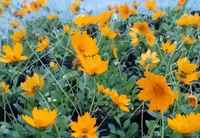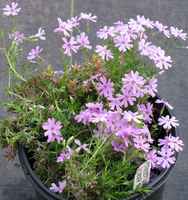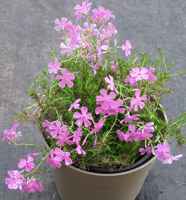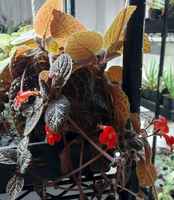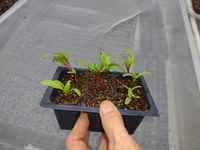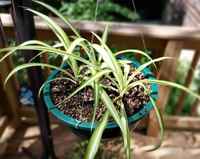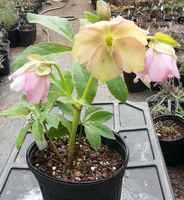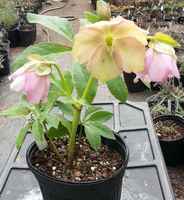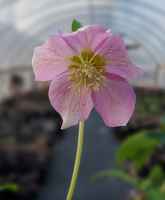Click Here to go to the New Market Page!
The Market is now at the Open Food Network
The Market Managers have temporarily disabled ordering at this market.
Categories
All Products (735)
Coffee (7)
Cotton Candy (11)
Cut Flowers (3)
Dairy (17)
Delivery (2)
Eggs (16)
Essential Oil (26)
Fiber (19)
Gourds (1)
Herbal Tea (37)
Herbs (42)
Honey (1)
Incense (7)
Meat (121)
Mushrooms (24)
Nuts (3)
Prepared Foods (4)
Seasonal Items (1)
Seeds (1)
Spice & Herb mix (12)
Vegetables (33)
Wood Products (11)
Live Plants (60)
Live Animals (1)
Featured Products
Live Plants
Greek Sage
Greek Sage is the most prevalent form of cooking sage and it often makes up part or all of what is sold as dried sage. Despite the fact that it can handle extremely hot daytime summer temperatures, it can also tolerate some degree of frost in winter.
10 inch Spring Pansy Planter
Grower: Dogwood Valley Greenhouse
Price: $20.00 ( each bowl )
Available (Exact): 3
Four multicolored Violas ("baby pansies") in an earthtone 10 inch plastic planter. And in the center is a pretty yellow ... more
Grower: Dogwood Valley Greenhouse
Price: $20.00 ( each bowl )
Available (Exact): 3
Four multicolored Violas ("baby pansies") in an earthtone 10 inch plastic planter. And in the center is a pretty yellow ... more
Anemone, dwarf white
Grower: Dogwood Valley Greenhouse
Price: $7.50 ( Gallon pot )
Available (Exact): 0
Anemones' timeless grace enhances any garden. This species of anemones can be some of the earliest perennials to cover woodland ... more
Grower: Dogwood Valley Greenhouse
Price: $7.50 ( Gallon pot )
Available (Exact): 0
Anemones' timeless grace enhances any garden. This species of anemones can be some of the earliest perennials to cover woodland ... more
Coral Bells Plant - Apricot & Caramel Foliage
Grower: Dogwood Valley Greenhouse
Price: $7.50 ( trade gallon pot )
Available (Exact): 6
Also known as Alum Root, Heuchera is a beautiful genus of perennial foliage plants that will add a punch of ... more
Grower: Dogwood Valley Greenhouse
Price: $7.50 ( trade gallon pot )
Available (Exact): 6
Also known as Alum Root, Heuchera is a beautiful genus of perennial foliage plants that will add a punch of ... more
Coral Bells Plant - Compact Pink Foliage
Grower: Dogwood Valley Greenhouse
Price: $7.50 ( gallon pot )
Available (Estimated): 0
very dense compact mound of pink foliage Performs very well in the garden, less fussy and easier to grow Attracts ... more
Grower: Dogwood Valley Greenhouse
Price: $7.50 ( gallon pot )
Available (Estimated): 0
very dense compact mound of pink foliage Performs very well in the garden, less fussy and easier to grow Attracts ... more
Coral Bells Plant - Dark Red/Purple Foliage with Pink Splashes
Grower: Dogwood Valley Greenhouse
Price: $7.50 ( trade gallon pot )
Available (Estimated): 5
Also known as Alum Root, Heuchera is a beautiful genus of perennial foliage plants that will add a punch of ... more
Grower: Dogwood Valley Greenhouse
Price: $7.50 ( trade gallon pot )
Available (Estimated): 5
Also known as Alum Root, Heuchera is a beautiful genus of perennial foliage plants that will add a punch of ... more
Coral Bells Plant - Dark Red/Purple Foliage with Pink Splashes
Grower: Dogwood Valley Greenhouse
Price: $7.50 ( trade gallon pot )
Available (Estimated): 5
Also known as Alum Root, Heuchera is a beautiful genus of perennial foliage plants that will add a punch of ... more
Grower: Dogwood Valley Greenhouse
Price: $7.50 ( trade gallon pot )
Available (Estimated): 5
Also known as Alum Root, Heuchera is a beautiful genus of perennial foliage plants that will add a punch of ... more
Coral Bells Plant - Dwarf with Medium Green Foliage
Grower: Dogwood Valley Greenhouse
Price: $7.50 ( trade gallon pot )
Available (Estimated): 2
Also known as Alum Root, Heuchera is a beautiful genus of perennial foliage plants that will add a punch of ... more
Grower: Dogwood Valley Greenhouse
Price: $7.50 ( trade gallon pot )
Available (Estimated): 2
Also known as Alum Root, Heuchera is a beautiful genus of perennial foliage plants that will add a punch of ... more
Coral Bells Plant - Dwarf with Medium Green Foliage
Grower: Dogwood Valley Greenhouse
Price: $7.50 ( trade gallon pot )
Available (Estimated): 2
Also known as Alum Root, Heuchera is a beautiful genus of perennial foliage plants that will add a punch of ... more
Grower: Dogwood Valley Greenhouse
Price: $7.50 ( trade gallon pot )
Available (Estimated): 2
Also known as Alum Root, Heuchera is a beautiful genus of perennial foliage plants that will add a punch of ... more
Coral Bells Plant - Purple & Silver Foliage
Grower: Dogwood Valley Greenhouse
Price: $7.50 ( trade gallon pot )
Available (Exact): 4
Also known as Alum Root, Heuchera is a beautiful genus of perennial foliage plants that will add a punch of ... more
Grower: Dogwood Valley Greenhouse
Price: $7.50 ( trade gallon pot )
Available (Exact): 4
Also known as Alum Root, Heuchera is a beautiful genus of perennial foliage plants that will add a punch of ... more
Coral Bells Plant - Purple & Silver Foliage
Grower: Dogwood Valley Greenhouse
Price: $7.50 ( trade gallon pot )
Available (Exact): 4
Also known as Alum Root, Heuchera is a beautiful genus of perennial foliage plants that will add a punch of ... more
Grower: Dogwood Valley Greenhouse
Price: $7.50 ( trade gallon pot )
Available (Exact): 4
Also known as Alum Root, Heuchera is a beautiful genus of perennial foliage plants that will add a punch of ... more

Grower: Dogwood Valley Greenhouse
Price: $7.50 ( gallon pot )
Available (Estimated): 3
red-ruffled leaves and white flowers on red stems

Grower: Dogwood Valley Greenhouse
Price: $7.50 ( gallon pot )
Available (Estimated): 3
Coral Bells Plant - Ruffled Rose Orange Foliage
Grower: Dogwood Valley Greenhouse
Price: $7.50 ( gallon pot )
Available (Estimated): 0
compact, clump-forming, semi-evergreen perennial sporting large, warm, gently ruffled leaves. Emerging bright rose orange in spring, the foliage turns brilliant ... more
Grower: Dogwood Valley Greenhouse
Price: $7.50 ( gallon pot )
Available (Estimated): 0
compact, clump-forming, semi-evergreen perennial sporting large, warm, gently ruffled leaves. Emerging bright rose orange in spring, the foliage turns brilliant ... more
Coral Bells Plant - Solid Dark Red Foliage
Grower: Dogwood Valley Greenhouse
Price: $7.50 ( trade gallon pot )
Available (Estimated): 2
Also known as Alum Root, Heuchera is a beautiful genus of perennial foliage plants that will add a punch of ... more
Grower: Dogwood Valley Greenhouse
Price: $7.50 ( trade gallon pot )
Available (Estimated): 2
Also known as Alum Root, Heuchera is a beautiful genus of perennial foliage plants that will add a punch of ... more
Coral Bells Plant - Solid Dark Red Foliage
Grower: Dogwood Valley Greenhouse
Price: $7.50 ( trade gallon pot )
Available (Estimated): 2
Also known as Alum Root, Heuchera is a beautiful genus of perennial foliage plants that will add a punch of ... more
Grower: Dogwood Valley Greenhouse
Price: $7.50 ( trade gallon pot )
Available (Estimated): 2
Also known as Alum Root, Heuchera is a beautiful genus of perennial foliage plants that will add a punch of ... more
Coral Bells Plant - Yellow/green w/ Red Center
Grower: Dogwood Valley Greenhouse
Price: $7.50 ( gallon pot )
Available (Estimated): 0
Lovely large yellow-breen leaves with a red splash in the center. Small white flowers in summer are loved by the ... more
Grower: Dogwood Valley Greenhouse
Price: $7.50 ( gallon pot )
Available (Estimated): 0
Lovely large yellow-breen leaves with a red splash in the center. Small white flowers in summer are loved by the ... more
Coreopsis Plant, Dwarf
Grower: Dogwood Valley Greenhouse
Price: $7.50 ( trade gallon pot )
Available (Estimated): -2
This lovely perennial will delight you with bright yellow blooms all spring and well into summer. Continue to deadhead the ... more
Grower: Dogwood Valley Greenhouse
Price: $7.50 ( trade gallon pot )
Available (Estimated): -2
This lovely perennial will delight you with bright yellow blooms all spring and well into summer. Continue to deadhead the ... more
Creeping Phlox Plant - Medium Pink
Grower: Dogwood Valley Greenhouse
Price: $7.50 ( trade gallon pot )
Available (Estimated): 2
The one I'm selling needs an updated picture, as it is pinker than this picture shows. A rapidly spreading perennial, ... more
Grower: Dogwood Valley Greenhouse
Price: $7.50 ( trade gallon pot )
Available (Estimated): 2
The one I'm selling needs an updated picture, as it is pinker than this picture shows. A rapidly spreading perennial, ... more
Creeping Phlox Plant - Raspberry Pink
Grower: Dogwood Valley Greenhouse
Price: $7.50 ( trade gallon pot )
Available (Exact): 2
A rapidly spreading perennial, Creeping Phlox grows to no more than 8-10 inches in height. The foliage is soft, needle-like, ... more
Grower: Dogwood Valley Greenhouse
Price: $7.50 ( trade gallon pot )
Available (Exact): 2
A rapidly spreading perennial, Creeping Phlox grows to no more than 8-10 inches in height. The foliage is soft, needle-like, ... more
Flame Violet - 4" pot
Grower: Dogwood Valley Greenhouse
Price: $9.00 ( 4" pot )
Available (Exact): 1
Episcias (flame violets), Gesneriads which are related to African violets, are natives of Central & South America. They are grown ... more
Grower: Dogwood Valley Greenhouse
Price: $9.00 ( 4" pot )
Available (Exact): 1
Episcias (flame violets), Gesneriads which are related to African violets, are natives of Central & South America. They are grown ... more
Garden pack chard multi-colored
Grower: University Farm
Price: $2.00 ( 3-4 cell pack )
Available (Exact): 17
You are buying a young 3-4 cell pack of Bright Lights chard. These plants will need a bigger container in ... more
Grower: University Farm
Price: $2.00 ( 3-4 cell pack )
Available (Exact): 17
You are buying a young 3-4 cell pack of Bright Lights chard. These plants will need a bigger container in ... more
Hanging Basket - Spider Plant, Green & White Striped, Young
Grower: Dogwood Valley Greenhouse
Price: $15.00 ( 10" hanging basket )
Available (Exact): 1
The spider plant is exceptionally hardy, surviving in less than perfect conditions, and stunning in perfect conditions. A mature plant ... more
Grower: Dogwood Valley Greenhouse
Price: $15.00 ( 10" hanging basket )
Available (Exact): 1
The spider plant is exceptionally hardy, surviving in less than perfect conditions, and stunning in perfect conditions. A mature plant ... more
Hellebore - Lenten Rose, Light Pink/Green
Grower: Dogwood Valley Greenhouse
Price: $19.00 ( trade gallon pot )
Available (Exact): 0
Lenten rose is an evergreen, 15- to 18-inch tall groundcover with leathery, dark-green, shiny foliage. Their new growth generally appears ... more
Grower: Dogwood Valley Greenhouse
Price: $19.00 ( trade gallon pot )
Available (Exact): 0
Lenten rose is an evergreen, 15- to 18-inch tall groundcover with leathery, dark-green, shiny foliage. Their new growth generally appears ... more
Hellebore - Lenten Rose, Light Pink/green
Grower: Dogwood Valley Greenhouse
Price: $19.00 ( trade gallon pot )
Available (Exact): 0
Lenten rose is an evergreen, 15- to 18-inch tall groundcover with leathery, dark-green, shiny foliage. Their new growth generally appears ... more
Grower: Dogwood Valley Greenhouse
Price: $19.00 ( trade gallon pot )
Available (Exact): 0
Lenten rose is an evergreen, 15- to 18-inch tall groundcover with leathery, dark-green, shiny foliage. Their new growth generally appears ... more
Hellebore - Lenten Rose, Rose Pink
Grower: Dogwood Valley Greenhouse
Price: $19.00 ( trade gallon pot )
Available (Exact): 0
Lenten rose is an evergreen, 15- to 18-inch tall groundcover with leathery, dark-green, shiny foliage. Their new growth generally appears ... more
Grower: Dogwood Valley Greenhouse
Price: $19.00 ( trade gallon pot )
Available (Exact): 0
Lenten rose is an evergreen, 15- to 18-inch tall groundcover with leathery, dark-green, shiny foliage. Their new growth generally appears ... more

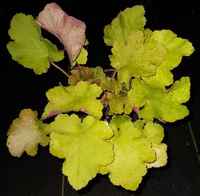
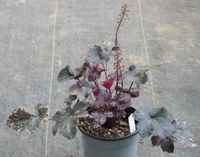
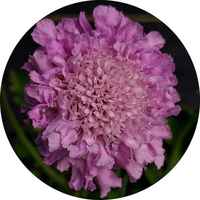
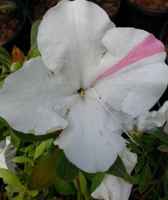
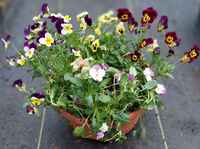
_USE.jpg?1617430246)
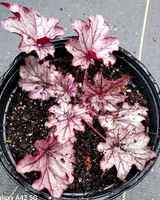
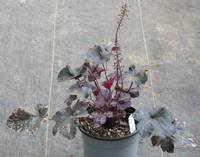

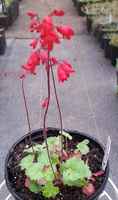
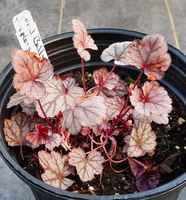
_USE.jpg?1617430464)
.jpg?1679116721)
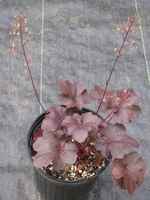
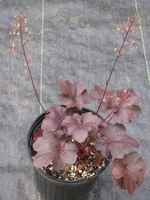
.jpg?1679118411)
